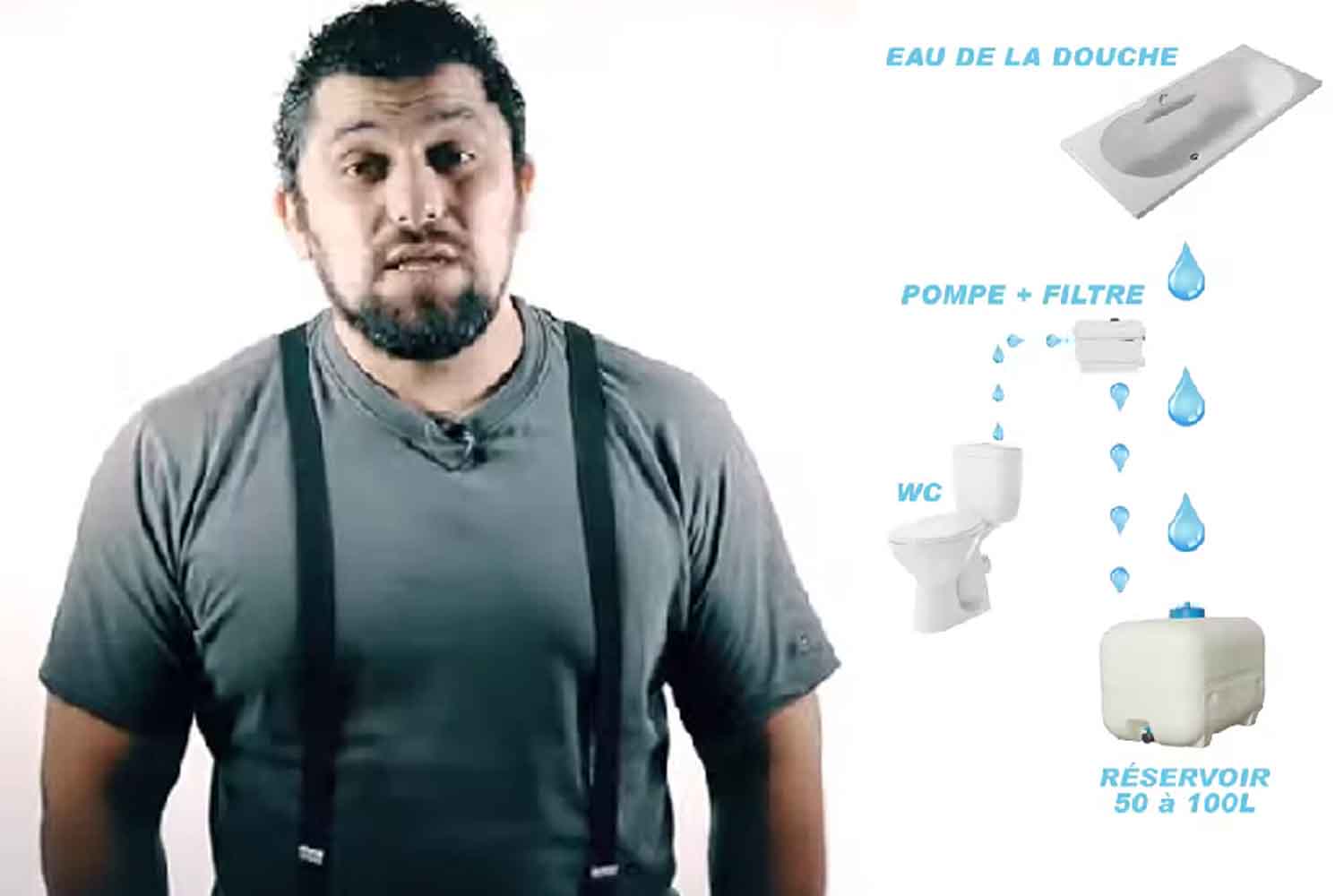Reuse shower water to flush the toilet: a simple system to reduce bathroom waste, without major renovations and with nice savings on your bill too

Table of contents
Every time we flush the toilet, we use drinking water. It sounds absurd, but it’s true. Nine liters (2.4 gallons) of perfectly clean water are wasted in just a few seconds, multiple times a day, every single day. Yet a solution exists. And it came from Sidi Drici, a French plumber living in Melun, near Paris.
Sidi invented a greywater recovery system that collects used shower water, filters it, and reuses it for toilets. All of this without modifying your home’s plumbing, at an affordable cost (between €600 and €1,200, or $660-$1,320) and with no patent fees to pay. Simple, practical, effective.
How the greywater recovery system works

The idea was born while he was taking a shower, watching all that still-clear water go down the drain. Instead of letting it go to waste, Sidi thought of collecting it, cleaning it, and reusing it. His device is installed under the shower or bathtub, filters the water with a hair filter, disinfects it with chlorine tablets (like those used in swimming pools), and sends it directly into the toilet tank.
The recovery system has dimensions similar to a water heater and can even be installed in an apartment. There’s no need to call an engineer or redo the bathroom: just a plumber and a bit of attention. And the advantage is immediate.
How many gallons do you save? The numbers speak clearly
A person flushes the toilet an average of 4 times a day. With 9 liters (2.4 gallons) per flush, that’s 36 liters (9.5 gallons) per day. In a family of 4, it adds up to 144 liters (38 gallons) daily, which is over 55,000 liters (14,500 gallons) per year. And with the average water cost at €4.52 per cubic meter ($5 per 264 gallons), the savings on your bill can exceed €250 ($275) per year.
And that’s not all: the system has already been adopted by private homes in France, some elderly care facilities in Switzerland, and has received tremendous attention online. But the most interesting thing is that Sidi didn’t patent his invention, so anyone can use it, replicate it, and install it.
Sidi Drici isn’t just any entrepreneur. He’s also president of the association “Melun, Capitale de la Solidarité” and during breaks between jobs helps the homeless, distributes food, organizes charity drives, and supports those in difficulty. His invention comes from exactly this place: the desire to do something useful for everyone, without profiting from it.
If I charged for this invention, it would be like charging for the sun.
And indeed he chose not to register any patent, precisely to keep the project free and accessible. A rare choice that has touched many people even beyond French borders.
Why do we still use drinking water for toilets?
Today, in 2025, it’s still normal to use drinking water for flushing. But does it really make sense? With the climate crisis, increasingly frequent droughts, and rising resource costs, rethinking our consumption is urgent.
Sidi Drici’s system shows that we can do better without complicating our lives. With a modest investment, you can achieve environmental, economic, and practical benefits. And his example reminds us that often we don’t need great technologies, we just need to observe reality, ask ourselves a few more questions, and have the will to change things.
Source: Sidi Drici
